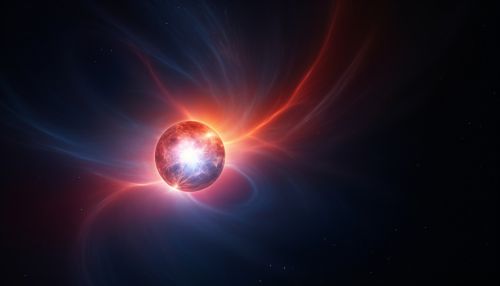Radiative Transfer in Stellar Atmospheres
Introduction
Radiative transfer is a fundamental concept in astrophysics and astrophysical plasmas, particularly in the study of stellar atmospheres. It describes the propagation of radiation through a medium, taking into account absorption, emission, and scattering processes. This article delves into the intricacies of radiative transfer in stellar atmospheres, providing a comprehensive and detailed understanding of the subject.


Basics of Radiative Transfer
The study of radiative transfer in stellar atmospheres begins with an understanding of the basic principles of radiation. Radiation is the emission of energy as electromagnetic waves or as moving subatomic particles. In the context of stellar atmospheres, radiation primarily refers to the electromagnetic waves emitted by the star, which includes visible light, ultraviolet light, and other forms of electromagnetic radiation.
Absorption
Absorption is a key process in radiative transfer. It refers to the absorption of radiation by the atoms and molecules in the stellar atmosphere. The absorbed radiation can cause the atoms and molecules to become excited or ionized, changing their energy states. The degree of absorption depends on the properties of the stellar atmosphere, including its temperature, density, and composition.
Emission
Emission is the process by which excited atoms and molecules in the stellar atmosphere release radiation. This can occur through various mechanisms, such as spontaneous emission, stimulated emission, and blackbody radiation. The spectrum of the emitted radiation provides valuable information about the physical conditions in the stellar atmosphere.
Scattering
Scattering is another important process in radiative transfer. It involves the redirection of radiation by the atoms and molecules in the stellar atmosphere. Scattering can change the direction, frequency, and polarization of the radiation, and it plays a crucial role in shaping the observed properties of the star.
Radiative Transfer Equation
The radiative transfer equation is a fundamental equation in the study of radiative transfer in stellar atmospheres. It describes how the intensity of radiation changes as it propagates through the stellar atmosphere, taking into account the effects of absorption, emission, and scattering.
The radiative transfer equation is a differential equation, and its solution requires knowledge of the initial conditions and boundary conditions. The complexity of the equation and the difficulty of obtaining accurate initial and boundary conditions make the solution of the radiative transfer equation a challenging task.
Stellar Atmosphere Models
A variety of models have been developed to study radiative transfer in stellar atmospheres. These models aim to accurately represent the physical conditions in the stellar atmosphere and to predict the observable properties of the star, such as its spectrum and brightness.
One-dimensional Models
One-dimensional models of stellar atmospheres assume that the physical conditions in the atmosphere depend only on the radial distance from the center of the star. These models are relatively simple and computationally efficient, but they may not accurately represent the complex, three-dimensional structure of the stellar atmosphere.
Three-dimensional Models
Three-dimensional models of stellar atmospheres take into account the variations in the physical conditions in all three spatial dimensions. These models are more complex and computationally demanding than one-dimensional models, but they can provide a more accurate representation of the stellar atmosphere.
Applications of Radiative Transfer in Stellar Atmospheres
The study of radiative transfer in stellar atmospheres has numerous applications in astrophysics. It is essential for interpreting the observed properties of stars and for understanding the physical processes occurring in stellar atmospheres.
Stellar Spectroscopy
Radiative transfer is a key component of stellar spectroscopy, which is the study of the spectrum of starlight. By analyzing the spectrum of a star, astronomers can determine the physical conditions in the star's atmosphere, including its temperature, density, and chemical composition.
Stellar Evolution
Radiative transfer also plays a crucial role in the study of stellar evolution. The radiation emitted by a star carries away energy, which affects the star's temperature, pressure, and other physical properties. By studying how these properties change over time, astronomers can gain insights into the life cycle of stars.
